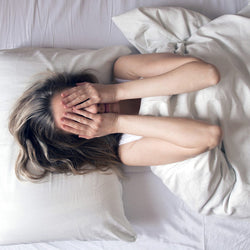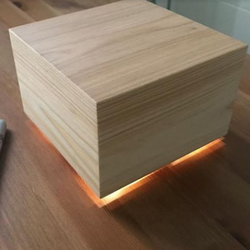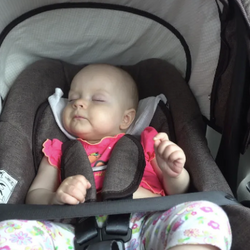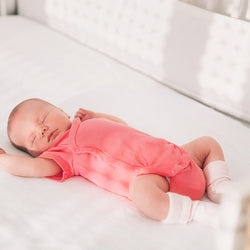7 Tips & Recommendations for Safe Sleep
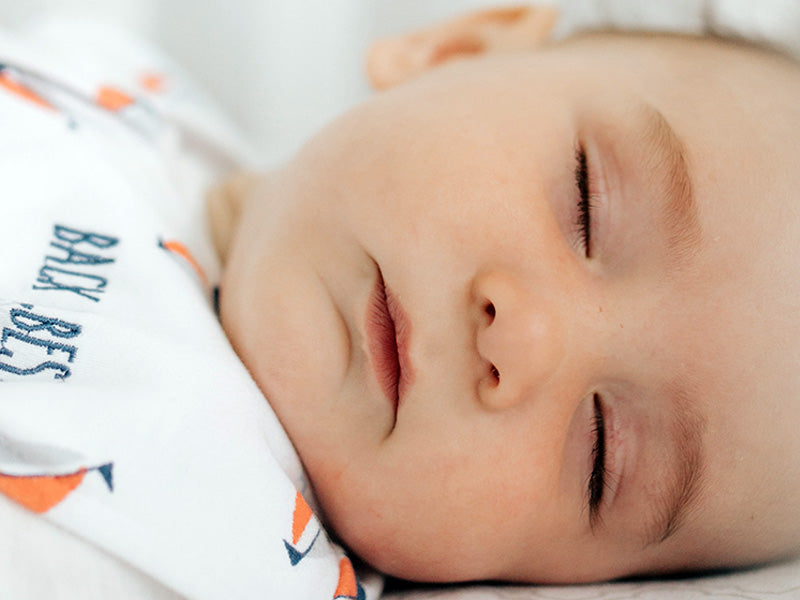
by Molly Ryan
Jul 16, 2020
Baby’s safety during sleep is always on the mind of new parents. Whether your plan is to room share, bedside co-sleep, or have baby sleep in the nursery, there are a few safe sleep tips that the CDC and AAP both recommend. Below is a summary of these recommended tips:
- Position baby on his/her back for the first year during sleep. While some preemie babies may have to sleep on their tummies for breathing problem issues it is recommended that all babies sleep on their backs for the first year. For more information on the importance of having baby sleep on their back, click here.
- Place baby on a firm surface to sleep on. There are many bedside sleepers, bassinets, cribs, and co-sleepers that are rated for safe sleep. Baby is safest on a firm surface with only a tight-fitting sheet in the bed.

- Room share for first 6-12 months. Sharing a room with your baby is much safer than bed sharing and may decrease the risk of SIDS by as much as 50%. Also, placing baby’s bed close to your bed so that the baby is within view and reach can also help make it easier to feed, comfort, and monitor your baby.
- Keep soft items and loose bedding out of baby’s bed. These include stuffed toys, pillows, quilts, blankets, toys, bumper pads, or anything that may create a suffocation risk. If you are worried about your baby getting cold, you can use infant sleep clothing, such as a wearable blankets. As a general rule, an additional layer more than what a parent is wearing should be adequate to keep baby warm during sleep.
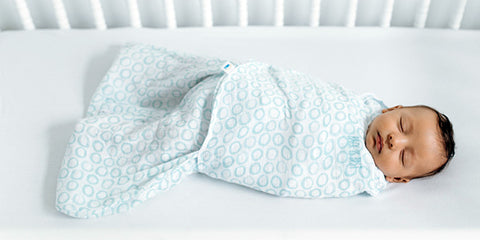
- Use wearable blankets vs traditional blankets or quilts. Wearable blankets are designed to be a safer alternative during sleep. These wearable swaddles, sleep bags, and sleep sack swaddles are excellent alternatives as they prevent any fabric from covering baby’s mouth and nose. For more tips on when to introduce blankets click here.
- Keep baby’s room temperature between 68 degrees and 72 degrees. Cooler temperatures in baby’s room help keep baby comfortable and can also help baby from falling into a deep sleep that is harder to wake from.
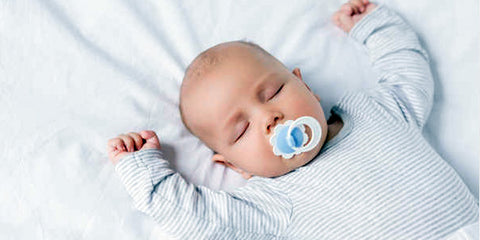
Article Continues Below Advertisement
- Offer a pacifier during naps and bedtime. Several medical studies have found that giving your baby a pacifier while they sleep may be associated with reduced risk of SIDS by a considerable amount. For breastfeeding moms make sure that baby is an established feeder before introducing the pacifier.
Things to Avoid
- Bed sharing with baby. This is by far the most talked-about subject when it comes to sleep safety. Co-Sleeping and room sharing are encouraged, bed sharing is not recommended. There are risks and rewards to bed sharing. Possible risks include; entrapment, suffocation, rebreathing, falls, strangulation and airway obstruction. The CDC and ADA do not recommend bedsharing. It is recommended that baby only be brought to bed with you for nursing or comfort and then returned to a safer sleep surface.
- Placing baby to sleep on a couch, sofa, or armchair. These three locations are the most dangerous place for baby to sleep and should be avoided. For more information click here.
While we are all sensitive to every parent’s individual choices, this article is aimed at setting up “best practice” habits and can be used as a resource for what is recommended to keep baby safest.
Molly Ryan
Molly is a mom of 5, grandma of two and a baby product expert. For the last 23 years she has enjoyed connecting parents to products and resources that help make their parenting journey uniquely theirs.



